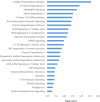Genetic diversity and selection signatures of the beef 'Charolais de Cuba' breed
- PMID: 30030481
- PMCID: PMC6054659
- DOI: 10.1038/s41598-018-29453-z
Genetic diversity and selection signatures of the beef 'Charolais de Cuba' breed
Abstract
In this study, we used BovineSNP50 Genotyping BeadChip data to estimate the structure, putative ancestral origin as well as to identify regions with selective sweeps that may have had an important role in the adaptation to tropical conditions of the 'Charolais de Cuba' (CHCU) breed. According to a principal component analysis, CHCU samples cluster together with taurine breeds with an estimated 93% of taurus ancestral alleles. Despite the short period since importation, we detected differentiation (Fst = 0.049) between the French Charolaise (CHA) and CHCU. However, CHA breed was the closest breed to CHCU followed by other hybrids breed with a clear CHA origin. Linkage disequilibrium (r2) decay tends to be lower in CHCU compared to CHA probably due to a less intense artificial selection programs of CHCU. Signals of recent adaptation to tropical conditions between CHCU and CHA were identified. Genes mapping within those regions reflect different functions related to immunity, metabolic changes and heat tolerance (CHCU) and muscle development and meat quality (CHA) that may have had an important role in the phenotypic differentiation of these breeds. Further studies will expand our knowledge on the molecular basis of adaptation of cattle to tropical conditions and molecular process associated with meat quality traits.
Conflict of interest statement
The authors declare no competing interests.
Figures






References
-
- Ajmone-Marsan P, Garcia JF, Lenstra JA, Globaldiv C. On the Origin of Cattle: How Aurochs Became Cattle and Colonized the World. Evolutionary Anthropology. 2010;19:148–157. doi: 10.1002/evan.20267. - DOI
-
- Magee DA, MacHugh DE, Edwards CJ. Interrogation of modern and ancient genomes reveals the complex domestic history of cattle. Anim. Front. 2014;4:7–22. doi: 10.2527/af.2014-0017. - DOI
-
- Morales Padrón, F. Historia del Descubrimiento y Conquista de América. (Editorial GREDOS, 1990).
Publication types
MeSH terms
LinkOut - more resources
Full Text Sources
Other Literature Sources
Miscellaneous

